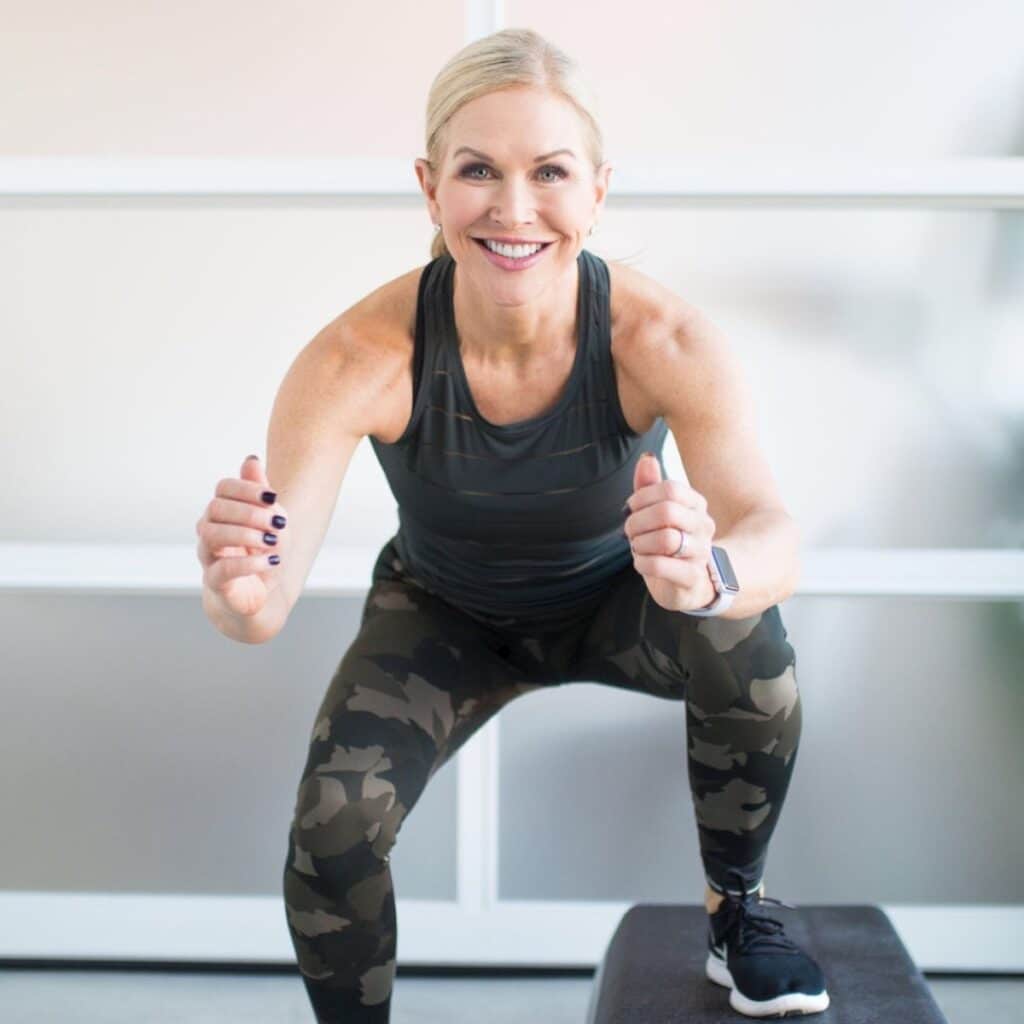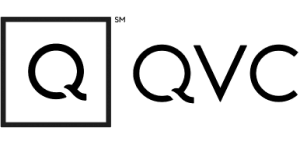This post contains affiliate links. Please see our disclosure policy.
Discover the best lower ab workout for women to strengthen your core, improve stability, and alleviate back pain.
The benefits of a strong core extend way beyond toned abs—it can improve your daily life, too! After decades of experience training women, I can tell you my lower ab exercises for women are a great way to help build that necessary core strength.
Whether you bend, lift, twist, or stand, your core is essential for maintaining balance and stability. (Not to mention, it can also alleviate lower back pain.)
You may have weak core muscles if you live a more sedentary lifestyle (i.e., lots of sitting and not enough activity), struggle with losing menopause belly fat, or if you’ve given birth or have a condition called diastasis recti, in which the ab muscles begin to separate during pregnancy.
By adding my lower ab exercises to your overall core exercise routine (while maintaining a healthy diet), you’re bound to see improved stability, less back pain, and more defined lower abs.
Each of my handpicked exercises for lower abs can help tone and strengthen your core, reduce lower back pain, and keep you feeling fit, strong, and energized. Be sure to take your time and maintain good form (these are not about speed!), and remember to breathe.
Here are the 15 best lower abs exercises to incorporate into your workout routine:

Save This Article To Read Later
1. Plank
The plank is a staple of most ab workouts because it recruits the entire core! Try my 8 minute plank challenge to build your muscles!
How to perform a plank:
- Begin kneeling on all fours with your hands directly under your shoulders and toes on the mat.
- Tighten your abdominals and raise your body up off the floor, lengthening your legs behind you. Hold your entire body tight, and remember to breathe.
2. Bird Dog
Bird dogs strengthen the lower back and abdominals while promoting stability and balance.
How to perform a bird dog:
- Kneel on the mat on all fours. Reach one arm long, draw in the abdominals, and extend the opposite leg long behind you.
- Repeat on the other side.
3. Forearm Side Plank
The forearm side plank move doesn’t just target your core, it also strengthens your shoulders and upper back.
How to perform a forearm side plank:
- Being lying on the floor with your forearm on the mat and your shoulder stacked over your elbow. Legs are long, with your feet stacked on top of each other.
- Lift your body into a side plank position, keeping your lower knee on the floor and your abdominals engaged. Try not to let your hips rise or drop.
- Repeat on the other side.
4. Bend-Extend Ab Tuck
Bend-extend ab tucks are great for working your lower abdominal area and protecting your lower back.
How to perform a bend-extend ab tuck:
- Start seated on the mat with arms behind you, hands on the mat, and fingers facing your backside. Sit back on your hands and lift up your feet off the mat, keeping the knees bent.
- Keep abs tight, press your legs out long, and your lower back down slightly (you should feel your lower abdominals working). Push yourself back up and pull your knees in to return to the start position.
5. Bicycle Crunch
Performing bicycle crunches help build coordination and a strong core.
How to perform a bicycle crunch:
- Start lying on your back with your feet off the floor and legs in a tabletop position. Hands are behind your head, and your head, neck, and shoulders are flexed off the mat.
- Bring one knee in and to the opposite elbow, reaching towards it. Repeat on the other side in a crisscross motion working the obliques.
6. Toe Reach
Performing toe reaches will focus on core engagement and target your transverse abdominis.
How to perform toe reaches:
- Start on your back with your lift your legs long towards the ceiling.
- Bring your head, neck, and shoulders off the mat and reach your arms up towards your feet. Return to the tips of the shoulders and repeat.
7. V-Up
V-ups are one of the best lower ab workouts for women!
How to perform v-ups:
- Lie flat on the floor and extend your arms behind your head. Keep your feet together and your toes pointed.
- Keep your legs straight and lift them up as you raise your upper body off the floor. Keep your core tight as you reach for your toes with your hands. Slowly lower yourself back down to the starting position.
8. Bridge
The bridge move stretches the chest, neck, spine, and hip flexors while strengthening the glutes, core, and lower back. It also helps improve posture!
How to perform a bridge:
- Begin lying on your back with your knees bent and feet flat on the floor close to the glutes.
- Place your arms flat on the floor next to you, tucking your shoulders under your back. Align your knees with your hip bones.
- Press your palms down as you lift your hips high and squeeze the glutes and abdominals. Keep your neck relaxed on the mat.
- Continue to breathe and hold for 30 seconds.
9. Full-Body Roll-Up
Performing full-body roll-ups challenge your core and give you a great stretch for your back.
How to perform a full-body roll-up:
- Start lying on the mat with your arms extended overhead, legs long, and feet flexed.
- Inhale as you lift your arms up and begin curling your chin and chest forward. Exhale as you roll the entire torso up and over your legs, keeping your abs engaged while reaching for your toes.
- Inhale as you begin rolling your spine back down one vertebra at a time, and exhale as the upper portion of the back lowers and your arms reach pack overhead. Repeat moving slowly and using the abdominals to lift and lower.
10. Dead Bug
Dead bugs are low-impact and promote coordination, posture, and core strength while working the lower abs.
How to perform a dead bug:
- Start on your back with your arms extended toward the ceiling and your legs bent at 90 degrees, stacked over your hips, in a tabletop position.
- Slowly extend your left leg out straight while dropping your right arm overhead. Keep both a few inches from the ground while squeezing your glutes and keeping your core engaged. Be sure to keep your lower back pressed to the floor.
- Repeat on the opposite side, extending your right leg and your left arm. (That’s one rep.)
11. Leg Drops
The leg drop move focuses on strengthening the lower abs and back. Keep your movements slow to really work the core!
How to perform leg drops:
- Start lying on your back with both legs long towards the ceiling.
- Keep your abs tight as you lower one leg until it’s a few inches off the floor, then switch legs.
- Tip: never go so low with your legs that your back pops off the mat.
12. Flutter Kicks
You’ll definitely feel these flutter kicks in your lower abs!
How to perform flutter kicks:
- Start lying on your back, legs extended at a 45-degree angle, with your arms down at your sides and your legs off the ground.
- Slightly lift your head, shoulders, and neck off the ground.
- Start kicking (or fluttering) your legs up and down, alternating as you go. Your flutters should be at a pace you can maintain while still keeping your core still.
- Try to flutter for at least 30 seconds, or as long as you can!
13. Hollow Body Hold
The hollow body hold can certainly be challenging, but your core will thank you for it!
How to perform a hollow body hold:
- Start lying on your back with your arms extended overhead and your legs straight, resting on the floor.
- At the same time, with control, lift your arms, head, shoulder blades, and legs off the floor.
- Hold for 20 to 30 seconds (or as long as you can), then return to the starting position.
14. Bear Crawl Hold
The bear crawl hold is another challenging move, but it’s perfect for activating your core, shoulders, quads, back, and hips.
How to perform a bear crawl hold:
- Start on all fours and lift your knees so that they’re at a 90-degree angle and hovering an inch off the ground. Only your palms and toes should be touching the floor.
- Keep your back flat, core engaged, legs hip-width apart, and arms shoulder-width apart.
- Hold this position for 20 to 30 seconds, or as long as you can!
15. Mountain Climbers
Think of mountain climbers as a more advanced version of the plank that work nearly every muscle group in the body!
How to perform mountain climbers:
- Start in a plank position with arms and legs long. Keep your abs pulled in and your body straight.
- Pull your right knee into your chest. As the knee draws to the chest, pull your abs in even tighter to be sure your body doesn’t sag or come out of its plank position.
- Quickly switch and pull the left knee in. At the same time you push your right leg back, pull your left knee into the chest using the same form.
- Continue to switch knees. Pull the knees in right, left, right, left—always switching simultaneously so that you are using a “running” motion.
FAQs
Incorporating lower ab workouts is just one part of getting rid of a lower belly pooch!
The best ways to reduce lower belly fat include getting 150 minutes of cardio per week (including HIIT 1-2 times per week), doing ab-toning workouts, creating a calorie deficit in your diet, increasing your protein and fiber intake, limiting simple sugars and refined carbs, upping your water intake, getting plenty of sleep, and, of course, doing lower ab exercises.
Just like any other muscle group, your abs need a break too. Instead of focusing solely on abs every day, try to incorporate two to three days of HIIT or strength training to help work your entire body and burn more fat—and thus, expose those abs!
The abdominal muscle groups include:
Transversus Abdominis: Think of this as an internal corset that pulls you in nice and tight, keeping your tummy tight and back strong. When you cough or blow out candles, this is the muscle you are engaging.
External Obliques: The large muscles that wrap around your rib cage starting just beneath your arms. They help you flex, bend, twist, and rotate.
Internal Obliques: These are deeper side muscles than the external obliques, and help keep you stabilized.
Rectus Abdominis: This is the one most people think of when they look at their abs because it is noticeable. It is the muscle that runs up the front of the body and looks like a 6-pack when super lean. The rectus abdominis helps to flex the spine and provide stabilization during side bending and while your extremities are moving.
The best lower ab sessions should last long enough to get your abs working, typically between 15 and 30 minutes, depending on your fitness level. Aim to work your abs 2 to 3 times per week for the best results.
Yes, lower ab workouts are safe during pregnancy as long as your doctor has not restricted exercise. After the first trimester, you will want to avoid any exercises that require lying flat on your back.
Seeing results from lower ab exercises depends on a number of factors, including your overall body fat percentage, your diet, and how often you work out. On average, you can expect to see results anywhere from a few weeks to a few months.


